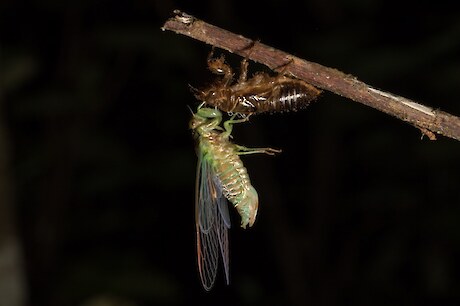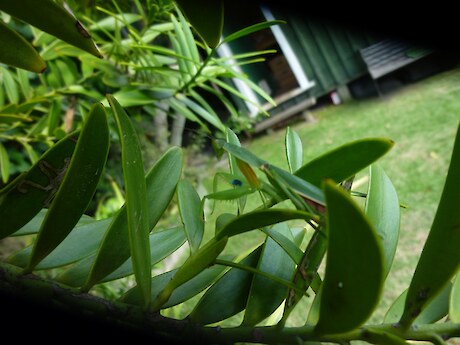 The term invertebrates covers anything without a back-bone. And just like our birds and lizards, New Zealand’s invertebrates are mostly unique to Aotearoa. All our native animals depend on them. Endemic birds such as the riroriro (grey warbler) and pīwakawaka (fantail) feed exclusively on invertebrates, and even our honey-eaters like tūī cannot survive without a regular protein fix.
The term invertebrates covers anything without a back-bone. And just like our birds and lizards, New Zealand’s invertebrates are mostly unique to Aotearoa. All our native animals depend on them. Endemic birds such as the riroriro (grey warbler) and pīwakawaka (fantail) feed exclusively on invertebrates, and even our honey-eaters like tūī cannot survive without a regular protein fix.
So why not turn your garden into an insect farm? Try to cultivate a good variety of native plants and let leaves and branches naturally accumulate and slowly decompose. This provides an environment and food source for myriads of critters. Check out our fabulous native invertebrates:
Butterflies and moths
Invertebrates with their own section found here.
Wētā
There are many species but the one you’re likely to see is the Auckland tree wētā . They’re doing OK but you can help keep them by installing a wētā motel.
 Cicadas / Kihikihi
Cicadas / Kihikihi
The unique sound of our summer. We have more than 50 species and every single one is only found here. The species most of us are familiar with is the chorus cicada (Amphipsalta zelandic) which reach their deafening peak in February. Kids love looking for their cast off shells. Introduced wasps are a threat to our native cicadas. Even if you’re not a huge cicada fan, it is worth checking out Cicadas of New Zealand, a book by ten-year-old Olly Hills.
 Slugs
Slugs
Icky! There are many invasive species (with 4 antennae), but keep an eye out for our unique natives (with just 2 antennae) which are all leaf-veined (Athoracophorus family), like this Grey Lynn resident. They haven’t been studied a great deal, but they are generally nocturnal, like damp conditions and feed mostly on algae and fungi and leaves.
 New Zeland mantisNew Zealand Mantis
New Zeland mantisNew Zealand Mantis
New Zealand’s native mantis (Orthodera novaezealandiae) is endemic and sadly in decline. It is out-competed by the South African mantis, which was accidentally introduced in the late 1970s, first around New Lynn. South African mantises are sometimes brown with a thin neck whereas our native mantis is ALWAYS green, has a thick neck and the adults have a lovely purple spot on their “forearms”. If you want to encourage mantises in your garden, eliminate any South African invaders and avoid pesticides which kill the insects our native mantises feed on. Invasive wasps are a threat to our mantises.
Spiders
Because spiders are carnivores they are especially juicy morsels packed with protein for our native birds, and spider webs are an important nest-building material.
 Beetles
Beetles
New Zealand has a vast array of species and most are endemic. Some are really weird and wonderful. They spend the largest period of their lives as grubs and an old dead log is just what many of them love. Here’s our bizarre Giraffe Weevil. Two of them actually, mating. And it can fly!
 Peripatus
Peripatus
This amazing survivor, sometimes known as a velvet worm (or walking worm) has been doing its thing on planet Earth pretty much unchanged for 500 million years, and New Zealand has several species only found here! They love old soft rotten logs but have also turned up in gardens! If you spot one please tell us or DoC. https://www.doc.govt.nz/nature/native-animals/invertebrates/peripatus-ngaokeoke/
